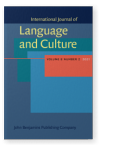Vol. 8:2 (2021) ► pp.346–372
Influence of gender on the use of kinship terms in English and Serbian
Cultural linguistic study
Kinship terms are widely present in the English and Serbian language. However, research on their actual use and the role gender plays in the selection of those terms is fairly scarce. The purpose of this contrastive analysis is to explore the influence of gender on the use of kinship terms among the speakers of English and Serbian and to determine cultural conceptualizations underlying these terms. The study is corpus based. The data were collected by the means of questionnaires and analyzed statistically. Kinship terms represent a culturally constructed category reflected in the lexicon of these two contrasted languages. For this reason, Cultural Linguistics and its theoretical and analytical tools serve as the basis for the theoretical framework for this study. The results of the analysis have shown that gender significantly influences the use and the selection of kinship terms.
Article outline
- 1.Introduction
- 2.Theoretical background
- 2.1Definition of kinship
- 2.2Classifications of kinship
- 2.3Kinship terminology
- 2.4Cultural linguistics
- 2.4.1Cultural schemas
- 2.4.2Cultural categories
- 3.Methodology
- 4.Results and discussion
- 5.Conclusion
- Notes
-
References
